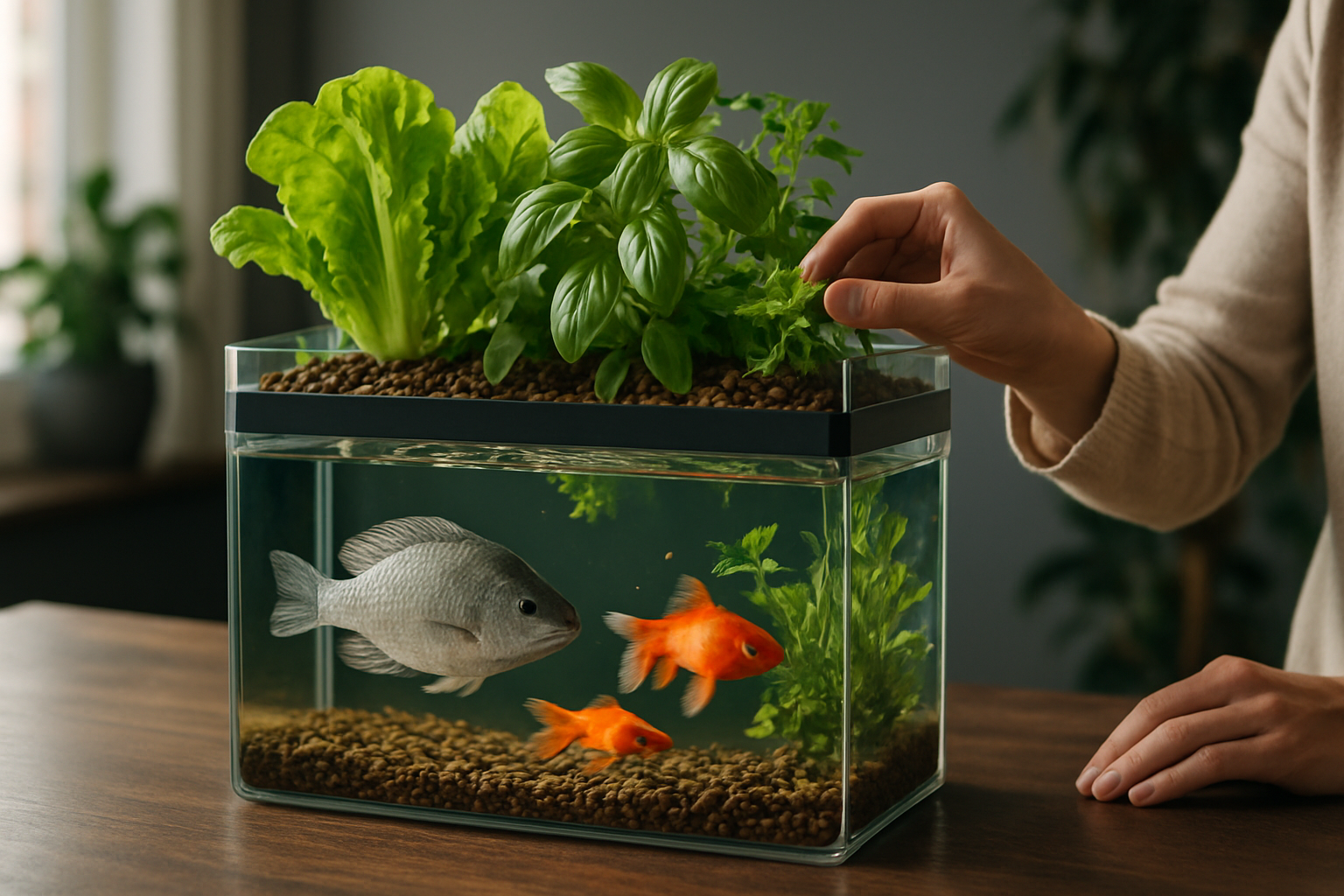Aquaponic Pet-Keeping: The Future of Sustainable Home Ecosystems
Imagine a world where your aquarium isn't just a beautiful display, but a thriving ecosystem that nourishes your houseplants. Welcome to the fascinating realm of aquaponic pet-keeping, a cutting-edge approach that combines aquaculture with hydroponics to create a symbiotic environment for fish and plants alike. This innovative method is revolutionizing the way we think about pet care and sustainable living, offering a unique solution for urban dwellers and eco-conscious pet enthusiasts.

The concept isn’t entirely new - ancient civilizations like the Aztecs used similar methods in their floating gardens. However, modern technology and understanding have refined these techniques, making them accessible for home use. Today, aquaponic systems range from small countertop units to elaborate backyard setups, catering to various scales of pet-keeping and gardening ambitions.
Selecting the Right Fish for Your Aquaponic System
Choosing the appropriate fish species is crucial for a successful aquaponic setup. While many fish can thrive in these systems, some are particularly well-suited. Tilapia, for instance, are hardy, fast-growing, and produce ample waste to nourish plants. Goldfish and koi are popular choices for their ornamental value and adaptability to various water conditions.
For those seeking more exotic options, consider the Australian Murray cod or the Southeast Asian climbing perch. These species not only add unique flair to your aquaponics system but also demonstrate remarkable resilience in fluctuating environments. When selecting fish, consider factors such as water temperature requirements, growth rate, and compatibility with other species if you’re planning a multi-fish system.
Plant Selection and Care in Aquaponic Pet-Keeping
The plant component of an aquaponic system is equally important. Leafy greens like lettuce, spinach, and herbs are excellent choices for beginners due to their rapid growth and low nutrient demands. As you gain experience, you can experiment with fruiting plants such as tomatoes or peppers, which require more nutrients but offer bountiful harvests.
Aquaponic gardening differs from traditional methods in several ways. The absence of soil means plants rely entirely on the nutrient-rich water from the fish tank. This requires careful monitoring of water quality and pH levels to ensure optimal growing conditions. Additionally, the symbiotic relationship between fish and plants often results in faster growth rates and higher yields compared to conventional gardening methods.
Maintaining Water Quality in Aquaponic Systems
Water quality is the lifeline of any aquaponic system. Regular testing and maintenance are essential to keep both fish and plants healthy. Key parameters to monitor include pH, ammonia, nitrite, and nitrate levels. The ideal pH for most aquaponic systems falls between 6.8 and 7.2, striking a balance between fish comfort and plant nutrient uptake.
Nitrifying bacteria play a crucial role in converting fish waste into plant-available nutrients. Establishing a robust bacterial colony is vital for system stability. This process, known as cycling, typically takes 4-6 weeks in a new setup. During this period, patience is key as the ecosystem establishes itself.
Advanced Techniques in Aquaponic Pet-Keeping
As aquaponic enthusiasts gain experience, many explore advanced techniques to optimize their systems. One such method is the integration of worm composting, or vermiculture, into the aquaponic setup. Red wiggler worms introduced to the grow beds help break down solid waste, enhancing nutrient availability for plants and further mimicking natural ecosystems.
Another emerging trend is the incorporation of aquaponics into smart home systems. IoT-enabled sensors and automated feeding systems allow pet owners to monitor and manage their aquaponic setups remotely. This technology not only simplifies maintenance but also provides valuable data for optimizing system performance.
The Benefits and Challenges of Aquaponic Pet-Keeping
Aquaponic pet-keeping offers numerous advantages. It’s a water-efficient method of raising fish and growing plants, using up to 90% less water than traditional gardening. The closed-loop system reduces the need for chemical fertilizers and pesticides, making it an environmentally friendly option. For pet enthusiasts, it provides a unique way to engage with their aquatic companions while producing fresh, organic produce.
However, this method also comes with its challenges. Initial setup costs can be higher than traditional aquariums or gardens, with prices ranging from $200 for small countertop units to several thousand dollars for larger systems. There’s also a learning curve in understanding the delicate balance of the ecosystem. Potential issues like power outages or equipment failure can have cascading effects on both fish and plants, requiring quick action to prevent losses.
The Future of Aquaponic Pet-Keeping
As urban populations grow and environmental concerns mount, aquaponic pet-keeping is poised for significant expansion. Research institutions and hobbyists alike are exploring new fish species and plant varieties suitable for these systems, broadening the possibilities for home-based food production and pet care.
The market impact of aquaponic pet-keeping is already evident, with a growing industry dedicated to supplying equipment and resources. Experts project the global aquaponics market to reach $1.4 billion by 2026, driven by increasing interest in sustainable living and food security.
Conclusion: A New Frontier in Pet Care and Sustainability
Aquaponic pet-keeping represents a fascinating intersection of pet care, gardening, and sustainable living. It offers a unique way to connect with nature, even in urban environments, while providing fresh food and a rewarding hobby. As technology advances and awareness grows, we can expect to see more innovative applications of this eco-friendly approach to pet-keeping and home gardening.
For those intrigued by the prospect of creating their own aquaponic ecosystem, the journey begins with research and planning. Whether you’re a seasoned aquarist looking for a new challenge or a gardening enthusiast seeking a sustainable method, aquaponic pet-keeping opens up a world of possibilities. It’s not just about keeping fish or growing plants; it’s about nurturing a complete, living ecosystem right in your home.





